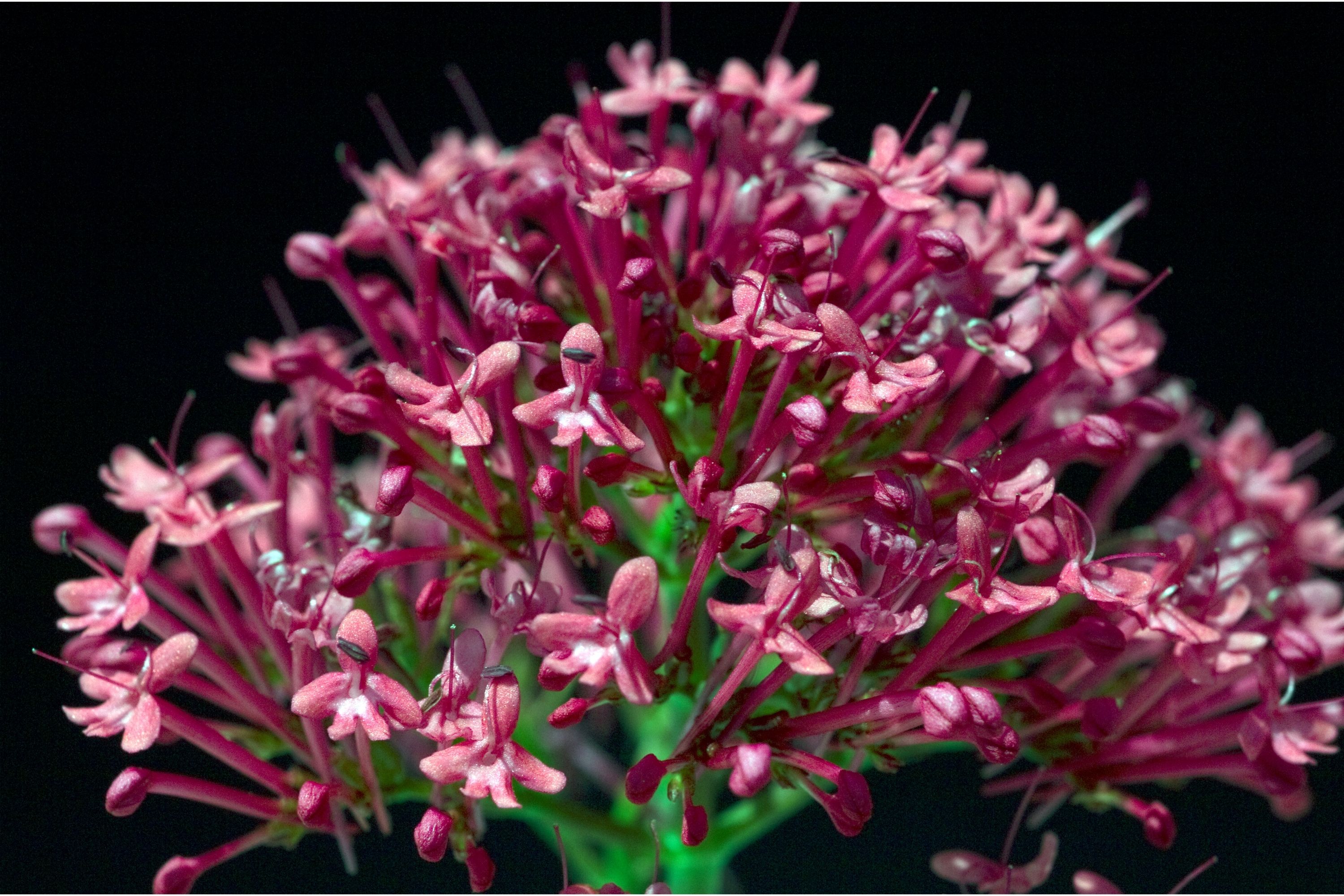Red valerian
(Centranthus ruber)

Description
Centranthus ruber, commonly known as red valerian, is a flowering perennial plant that belongs to the Caprifoliaceae family. It is native to the Mediterranean region, but it has naturalized in many parts of the world, including North America, Europe, and Australia. The plant is popular among gardeners and landscaping enthusiasts for its colorful and fragrant flowers, ease of cultivation, and ability to attract pollinators. In this article, we will explore the various aspects of Centranthus ruber, including its taxonomy, morphology, ecology, distribution, cultivation, and uses. Taxonomy: Centranthus ruber belongs to the kingdom Plantae, division Magnoliophyta, class Magnoliopsida, order Dipsacales, family Caprifoliaceae, genus Centranthus, and species ruber. It has several common names, including red valerian, Jupiter's beard, spur valerian, kiss-me-quick, and fox's brush. Morphology: Centranthus ruber is a perennial herbaceous plant that grows up to 90 cm in height. The plant has a woody base, multiple stems, and lanceolate leaves that are gray-green in color and up to 8 cm long. The flowers are borne in large, terminal clusters that can be up to 15 cm in diameter. Each flower has a tubular corolla that is 1-2 cm long and pink, red, or white in color. The flowers bloom from late spring to early fall and are highly fragrant. Ecology: Centranthus ruber is a hardy plant that can tolerate a wide range of growing conditions. It prefers well-drained soil, full sun, and moderate water. It can grow in coastal regions, meadows, roadsides, and disturbed areas. The plant is an important nectar source for bees, butterflies, and other pollinators. Distribution: Centranthus ruber is native to the Mediterranean region, including Spain, Italy, Greece, and Turkey. It has naturalized in many parts of the world, including North America, Europe, and Australia. In North America, it is found in California, Arizona, New Mexico, and other southwestern states. In Europe, it is found in France, Germany, England, and other countries. Cultivation: Centranthus ruber is an easy-to-grow plant that is popular among gardeners and landscaping enthusiasts. It can be propagated by seeds, cuttings, or division. Seeds should be sown in the spring or fall, while cuttings and division can be done in the spring or summer. The plant prefers well-drained soil, full sun, and moderate water. It can be grown in containers, borders, rock gardens, and other settings. The plant is drought-tolerant and requires little maintenance. Uses: Centranthus ruber is primarily grown for ornamental purposes. Its colorful and fragrant flowers make it a popular choice for gardens, parks, and other landscaping projects. The plant can also be used as a cut flower. In addition, the plant has medicinal properties and has been used to treat various ailments, including fever, cough, and digestive problems. The plant is also used in traditional medicine to relieve stress and anxiety. Conclusion: Centranthus ruber is a beautiful and versatile plant that is easy to grow and maintain. It is highly valued for its colorful and fragrant flowers, ability to attract pollinators, and medicinal properties. Whether grown in a garden or used for medicinal purposes, Centranthus ruber is a valuable and important plant that has many uses and benefits.
Taxonomic tree:







